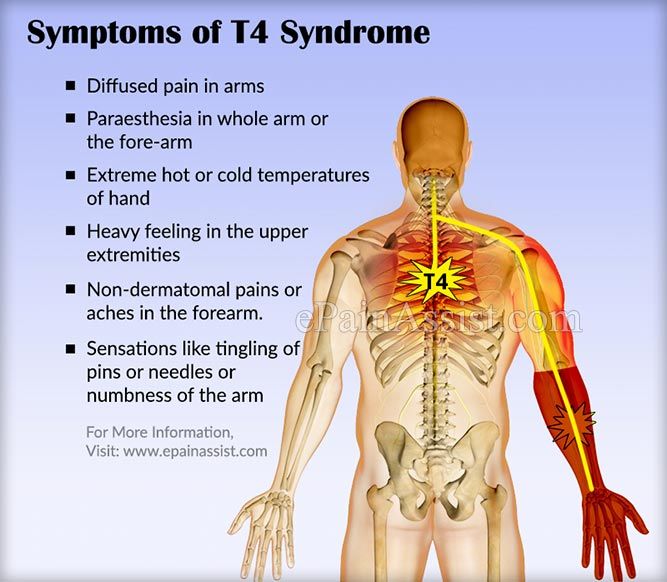Thoracic Outlet Syndrome (TOS) is a condition characterized by the compression of blood vessels or nerves in the chest and neck area, leading to pain and other symptoms. Without proper treatment, TOS can lead to severe health issues like permanent arm swelling, pain or weakness, nerve damage, gangrene, and blood clots. The cardiac plexus, connected with the coronary and pulmonary plexuses, plays a role in carrying pain from the heart to the upper thoracic spinal cord segments, causing pain referred to the left upper limb in the T1 and T2 dermatomes. The esophageal plexus involves the right and left vagus nerves and thoracic visceral branches of the sympathetic trunk.
For more detailed information on the anatomy related to TOS, refer to Thoracic Visceral Nerves. Hand pain and paresthesia in the median nerve distribution are differentiating features of TOS, often confirmed by nerve conduction studies. Treatment options include physical/occupational therapy or surgical decompression. A related condition, Cubital Canal Syndrome, exhibits similar symptoms.
Parsonage-Turner syndrome (PTS), also known as neuralgic amyotrophy or brachial neuritis, is another rare peripheral neuropathy predominantly affecting nerves that control movements in the chest wall, shoulder, arm, forearm, and hand. It can affect one or both sides of the body. The brachial plexus, a network of nerves originating at spinal levels C5, C6, C7, C8, and T1, is crucial in this context as these nerves serve all areas of the upper extremity.

The most common form of TOS, neurogenic thoracic outlet syndrome (NTOS), involves compression of the brachial plexus nerves. This compression, often due to congenital variations in anatomy or a history of neck or arm injury, can cause chronic symptoms. For more information on NTOS, visit Neurogenic Thoracic Outlet Syndrome. TOS leads to disabling pain in the neck and shoulder, as well as pain, numbness, tingling, and other symptoms in the affected areas.
To understand TOS in more depth, including its anatomy, visit Anatomy of the Thoracic Outlet. Treatment for recurrent neurogenic thoracic outlet syndrome is available, providing relief for those affected by this condition. For comprehensive treatment options, check out Treating Recurrent Neurogenic Thoracic Outlet Syndrome.
To learn more about TOS, its causes, symptoms, and treatment options, visit Thoracic Outlet Syndrome Overview, Rush University Medical Center, and Washington University School of Medicine. These resources offer valuable insights and expert advice on managing and treating TOS.


